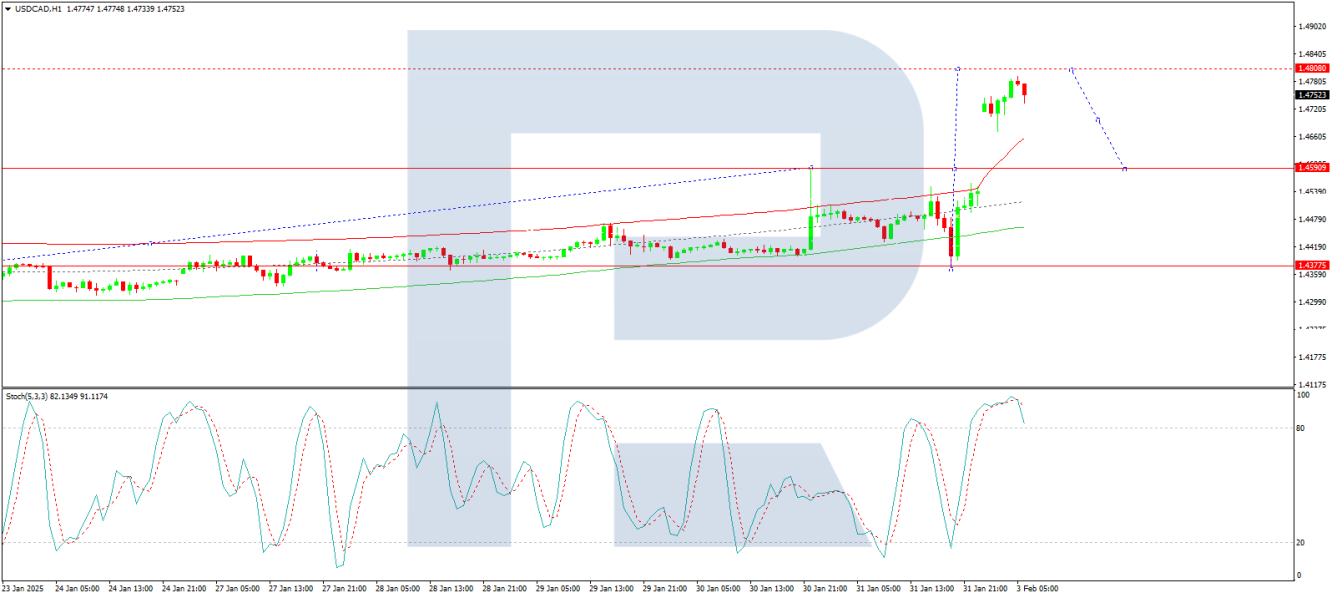The couple increased above 1,4760 on Monday, reaching their highest level since April 2003. This strong increase arose in response to the United States government decision to impose 25% tariffs on Canadian imports, which significantly affected To the Loonie.
Key factors that conduct USD/CAD
The White House framed tariffs as part of a broader policy to combat illegal immigration and illicit trade. However, economic repercussions are immediate, particularly for the economy based on basic products in Canada.
A 10% separate rate has been applied to Canadian energy exports, a somewhat lower rate than initially expected. Similar rates for Mexico were also introduced, while Chinese products now face an import tariff of 10%. In response, all affected countries have indicated plans for retaliation measures.
For Canada, the new commercial barriers represent a significant threat. With the economy that depends largely on exports, reduced foreign demand could reduce currency inputs and further weaken the CAD.
Investors are now directing their attention to the next Canadian data. December figures are expected to show a growth of 0.2%, which translate to an annual expansion of 1.4%, aligning with the projections of the Bank of Canada (BOC).
The BOC recently reduced its reference interest rate at 25 basic points to 3.0% per year and announced the end of its quantitative flexibility program. In addition, the Central Bank has indicated plans to resume asset purchases in March, with an even more peso of the Canadian dollar.
USD/CAD technical analysis
In Table H4, USD/CAD broke 1,4591 and continues its upward wave. With this rupture, the road to 1,4808 is now open, which makes it the next local objective. After reaching this level, a correction towards 1,4591 is possible before a renewed growth wave was pointed at 1,4919. The MACD indicator supports this perspective, with its signal line above zero and pointing sharply upwards, confirming a bullish impulse.

In graph H1, the torque has extended its ascending structure to 1,4742 and is now consolidating around this level. A rupture from the upward consolidation range would indicate a movement towards 1,4808. However, if the pair breaks down, a 1,4591 correction is possible before another attempt at the level of 1,4808. The stochastic oscillator indicates a possible short -term setback, with its signal line greater than 80 and prepares to decrease by 20.
Conclusion
The Canadian dollar remains under significant pressure, since the United States commercial tariffs boost uncertainty about future export demand. While the technical indicators suggest more rise for USD/CAD to 1,4808, a corrective movement towards 1,4591 is also possible before another growth wave. The next key market approach will be the data of the Canadian GDP and any additional development in the commercial reprisals of the affected countries, which could affect the couple's trajectory.
By analytical department of Roboforex
Discharge of responsibility
Any forecast contained in this document is based on the author's particular opinion. This analysis may not be treated as commercial advice. Roboforex has no responsibility for commercial results based on commercial recommendations and reviews contained in this document.
By analytical department of Roboforex












